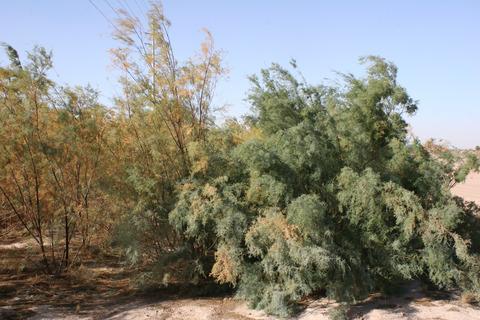当前位置:
X-MOL 学术
›
Funct. Ecol.
›
论文详情
Our official English website, www.x-mol.net, welcomes your feedback! (Note: you will need to create a separate account there.)
Spenders versus savers: Climate-induced carbon allocation trade-offs in a recently introduced woody plant
Functional Ecology ( IF 5.2 ) Pub Date : 2021-06-12 , DOI: 10.1111/1365-2435.13862 Randall W Long 1 , Tom L Dudley 2 , Carla M D’Antonio 1 , Kevin C Grady 3 , Susan E Bush 4 , Kevin R Hultine 4
中文翻译:

花钱者与储蓄者:最近引进的木本植物中气候引起的碳分配权衡
更新日期:2021-08-09
Functional Ecology ( IF 5.2 ) Pub Date : 2021-06-12 , DOI: 10.1111/1365-2435.13862 Randall W Long 1 , Tom L Dudley 2 , Carla M D’Antonio 1 , Kevin C Grady 3 , Susan E Bush 4 , Kevin R Hultine 4
Affiliation

|
- Non-structural carbohydrate (NSC) storage may be under strong selection in woody plant species that occur across broad environmental gradients. We therefore investigated carbon (C) allocation strategies in a widespread non-native woody plant, Tamarix. We predicted that genotypes with exposure to episodic freeze events would show elevated NSC concentrations compared to warm-adapted genotypes with the trade-off of reduced growth and reproduction relative to warm-adapted populations.
- We established an experimental common garden using genotypes of Tamarix, sourced across a strong thermal gradient within the introduced range. We measured seasonal NSC storage in coarse roots and stems, above-ground growth and flower production.
- Autumn NSC concentrations were 50% higher in genotypes from sites with episodic spring freeze events compared to genotypes from warmer sites. These cold-adapted genotypes also had a 2.3-fold higher starch to soluble sugar ratio than warm-adapted genotypes. Across all genotypes and seasons, NSC storage was inversely correlated with growth and reproduction.
- Results suggest that Tamarix from colder locations cope with freeze events by maintaining large storage pools to support tissue regrowth, but with the trade-off of overall reduced growth and reproduction. Our results are consistent with rapid selection in C allocation strategies in response to climate in introduced woody species.
中文翻译:

花钱者与储蓄者:最近引进的木本植物中气候引起的碳分配权衡
- 非结构性碳水化合物 (NSC) 储存可能在跨越广泛环境梯度的木本植物物种中受到强烈选择。因此,我们研究了广泛分布的非本地木本植物柽柳中的碳 (C) 分配策略。我们预测,与温暖适应基因型相比,暴露于偶发性冷冻事件的基因型将显示出更高的 NSC 浓度,并权衡相对于温暖适应人群的生长和繁殖减少。
- 我们使用Tamarix 的基因型建立了一个实验性公共花园,其来源跨越引入范围内的强热梯度。我们测量了粗根和茎中的季节性 NSC 储存、地上生长和花卉生产。
- 与来自较暖地区的基因型相比,发生春季冰冻事件的地区的基因型秋季 NSC 浓度高 50%。这些冷适应基因型的淀粉与可溶性糖的比例也比暖适应基因型高 2.3 倍。在所有基因型和季节中,NSC 储存与生长和繁殖呈负相关。
- 结果表明,来自较冷地区的柽柳通过维持大型储存池以支持组织再生来应对冻结事件,但要权衡整体生长和繁殖的减少。我们的结果与 C 分配策略的快速选择是一致的,以响应引入的木本物种的气候。



























 京公网安备 11010802027423号
京公网安备 11010802027423号